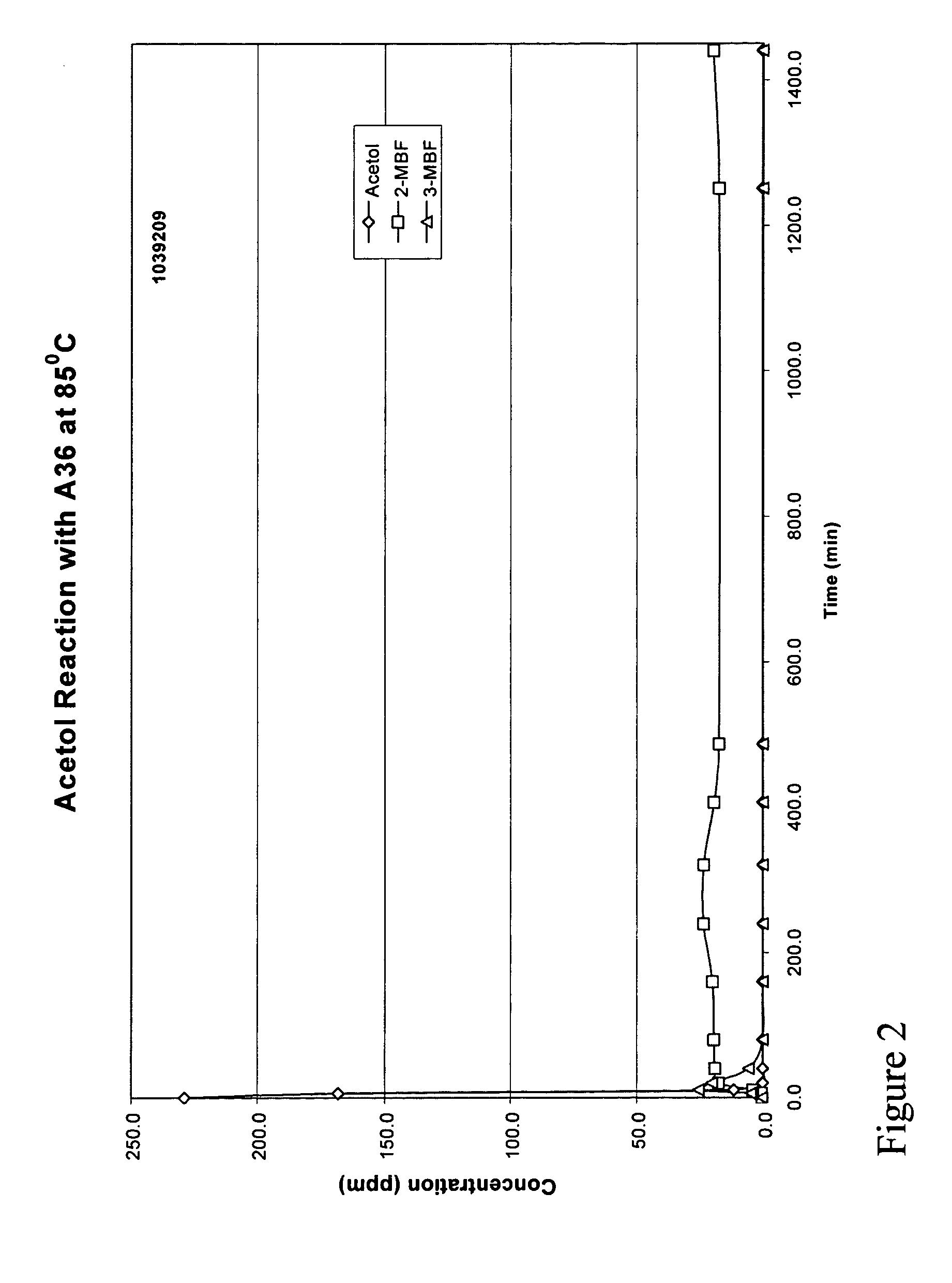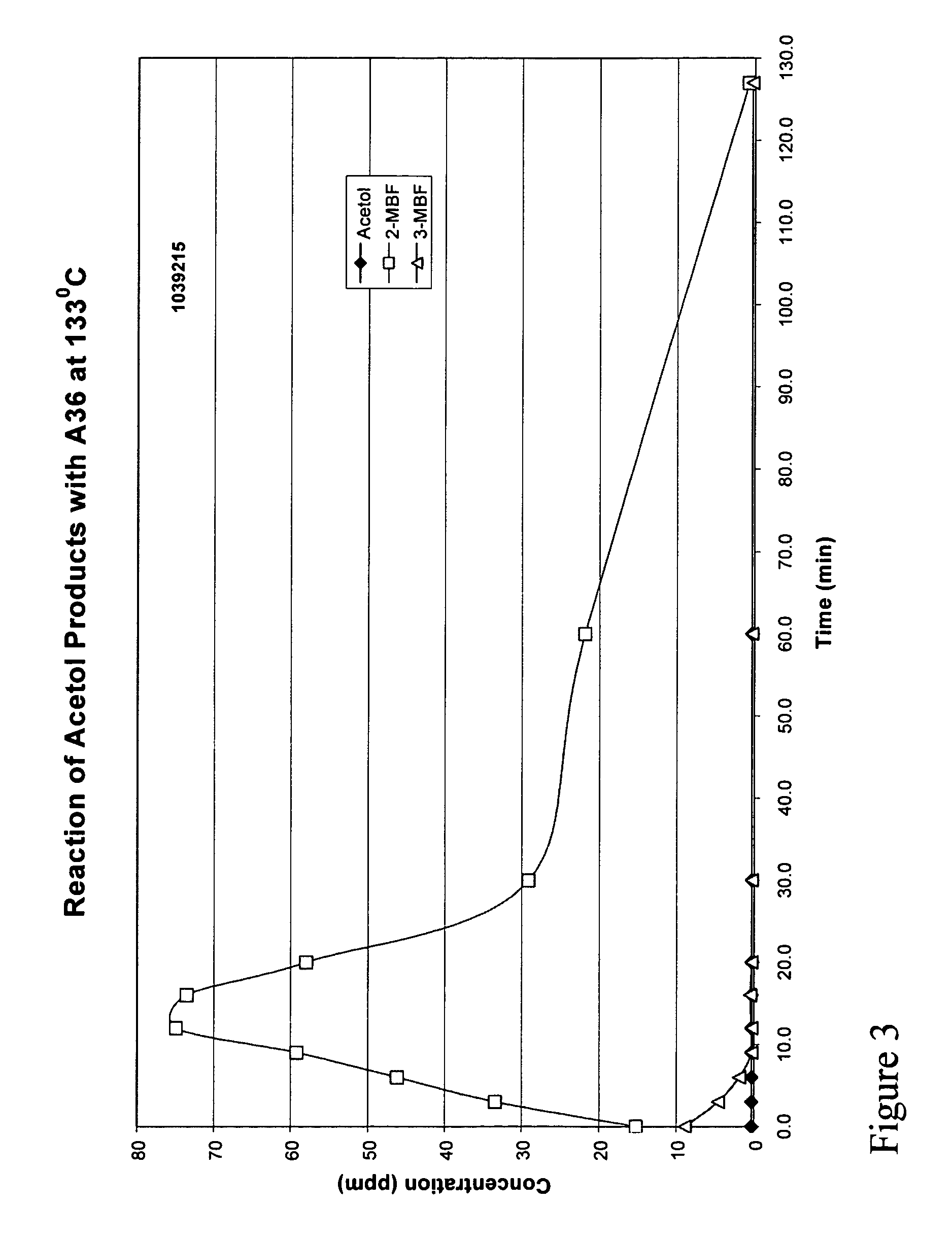Method for removal of acetol from phenol
a technology of acetol and phenol, which is applied in the field of high-purity phenol production, can solve the problems of undesirable impurities, inability to separate mbf from phenol by fractional distillation, and inability to remove mbf from phenol, etc., and achieve the effects of low cost removal, low cost methodologies, and low cost removal of acetol
- Summary
- Abstract
- Description
- Claims
- Application Information
AI Technical Summary
Benefits of technology
Problems solved by technology
Method used
Image
Examples
Embodiment Construction
[0020]It has been discovered that acetol can be removed efficiently from phenol at a low cost while minimizing the formation of methylbenzofuran (MBF). The treatment to remove acetol involves a treatment of distilled phenol containing acetol with either an acidic resin at low temperature or at elevated temperature, optionally with a small amount of caustic. By this treatment, acetol present in the crude phenol is converted primarily to high boiling products other than MBF. These high boiling products can then be separated from phenol via distillation.
[0021]The removal of acetol is key to the subsequent efficient removal of MBF from the crude phenol. As is known, at the high temperatures and acidic conditions used to convert MBF to products separable from phenol, acetol reacts with phenol to produce more MBF. This reaction has the dual effect of reducing phenol recovery and making the removal of MBF from the product less efficient.
[0022]In one embodiment of the invention, a distilled...
PUM
| Property | Measurement | Unit |
|---|---|---|
| temperature | aaaaa | aaaaa |
| temperature | aaaaa | aaaaa |
| temperature | aaaaa | aaaaa |
Abstract
Description
Claims
Application Information
 Login to View More
Login to View More - R&D
- Intellectual Property
- Life Sciences
- Materials
- Tech Scout
- Unparalleled Data Quality
- Higher Quality Content
- 60% Fewer Hallucinations
Browse by: Latest US Patents, China's latest patents, Technical Efficacy Thesaurus, Application Domain, Technology Topic, Popular Technical Reports.
© 2025 PatSnap. All rights reserved.Legal|Privacy policy|Modern Slavery Act Transparency Statement|Sitemap|About US| Contact US: help@patsnap.com



